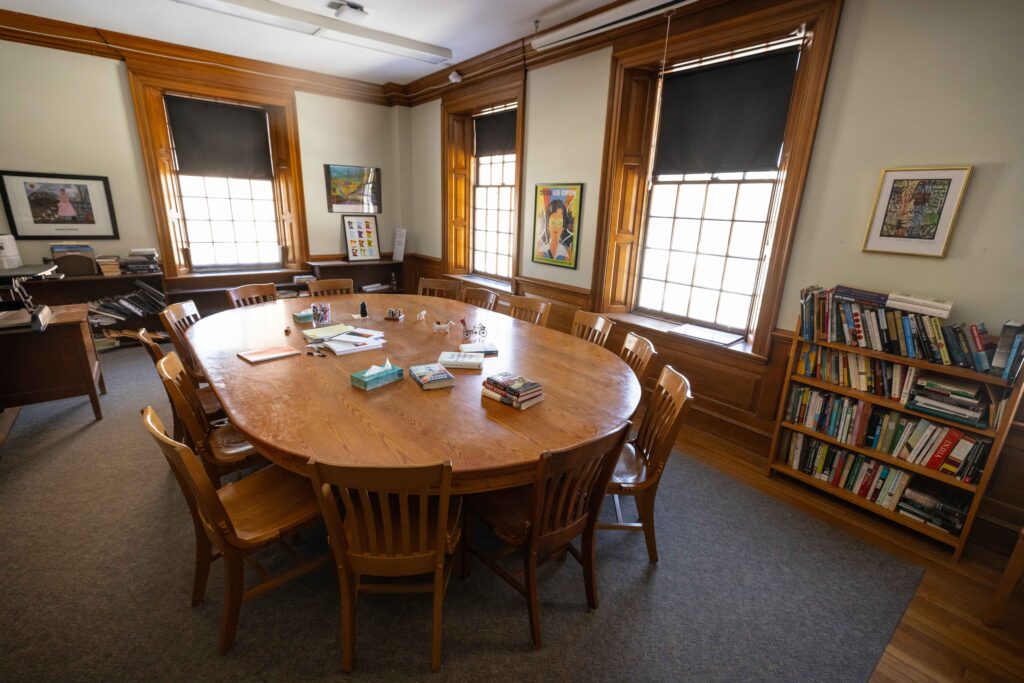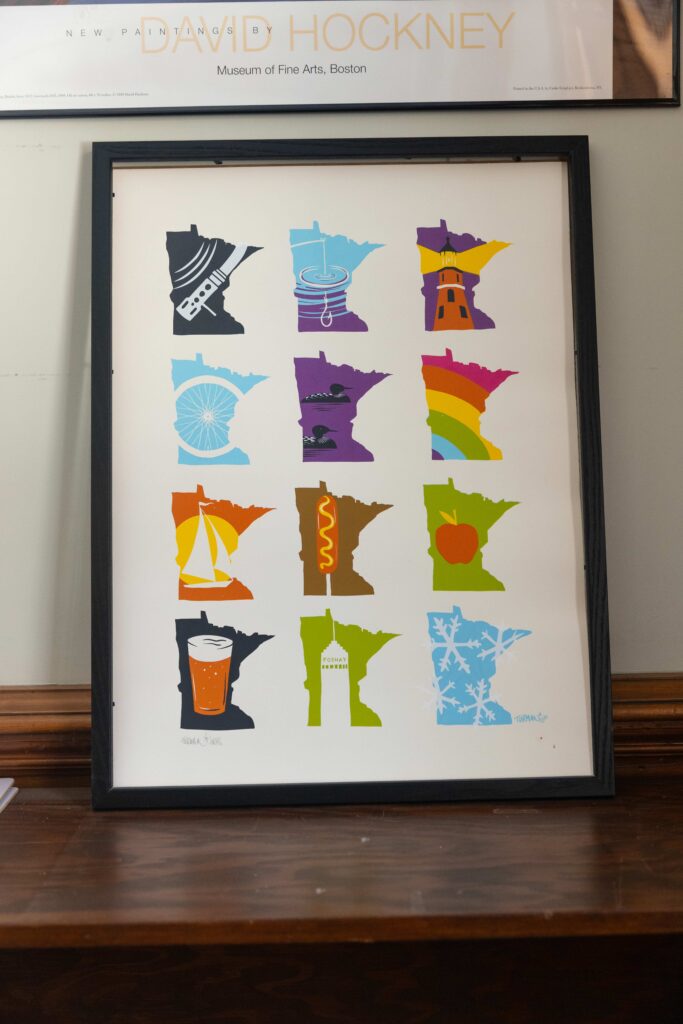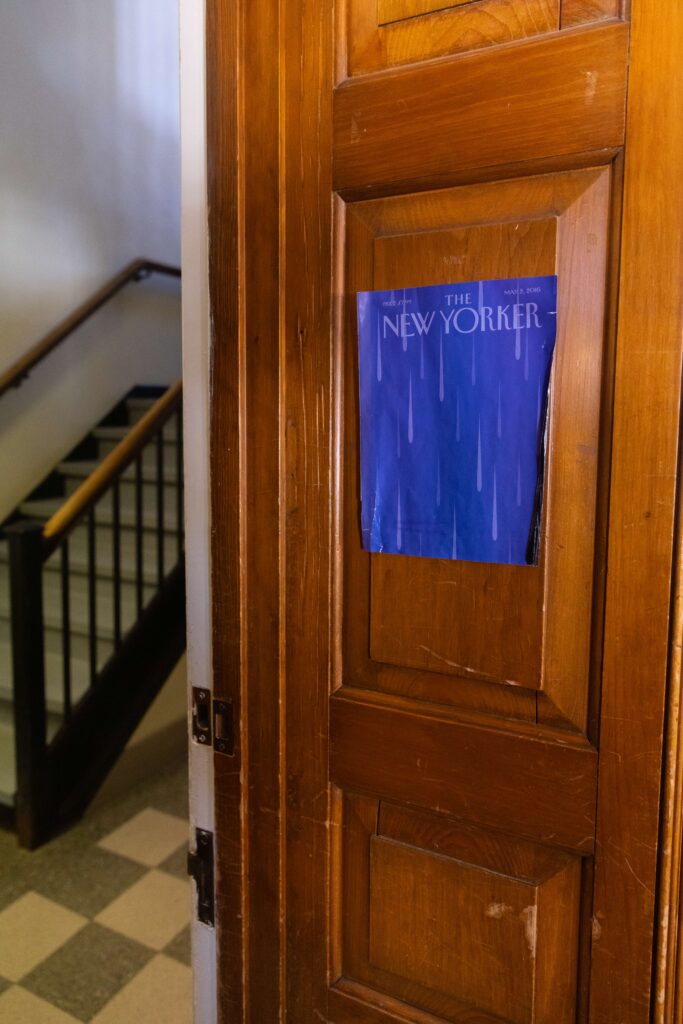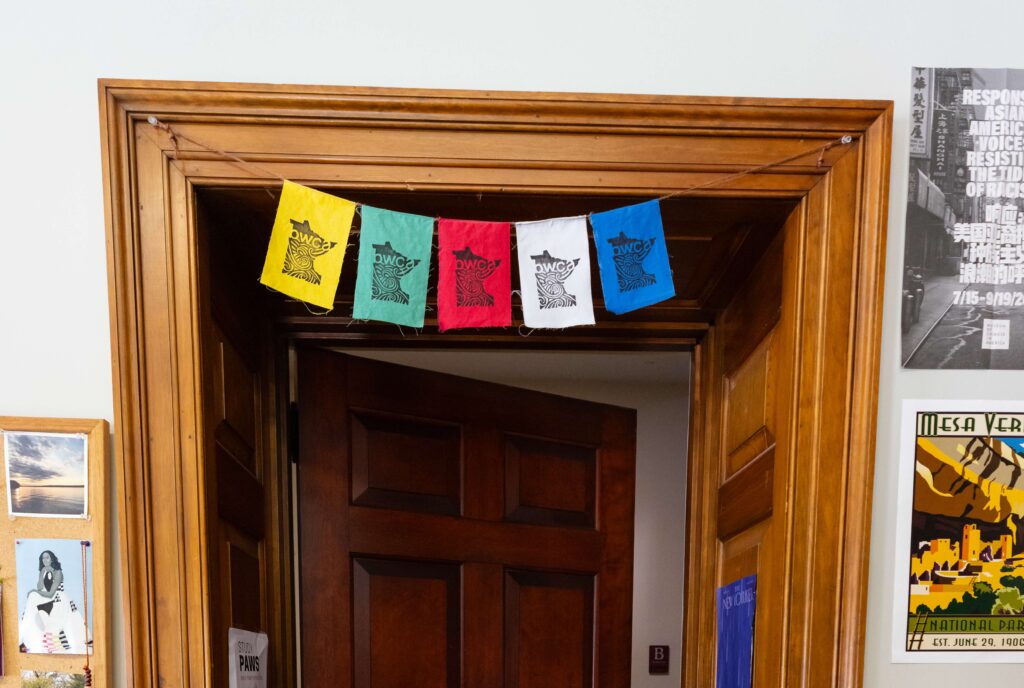Exeter Annotated:
Exeter Annotated:
Presence of the Past
Inside the classroom of Meg Foley, the Michael Ridder, class of 1958, distinguished professor in history
You would forgive Meg Foley if at some point during the next academic year she started her workday by walking to the northeast corner of the Academy Building — and into somebody else’s classroom. That kind of muscle memory develops from teaching in the same space for nearly two and a half decades.
But in July, Foley will transition to a new role, dean of faculty, and away from her corner room with the views into two quads. “I’ve had the chance to switch rooms over time, but I’ve always stuck with this room because I love the classic features,” she says. “And I love the vantage point. As people are leaving the building, especially after assembly, students or colleagues from other departments will pop in to chat. I’ll really miss that.”
Foley says she’ll also miss those moments of connection around the Harkness table, where — for 50 minutes each class — everything outside Room 030 fades away and meaningful discussion takes over.
“There are various tributes to my home state of Minnesota sprinkled around the room. I’ve got the ‘Purple Rain’ cover of The New Yorker from when Prince died, the Minnesota Twins Homer Hanky and Boundary Waters prayer flags.”
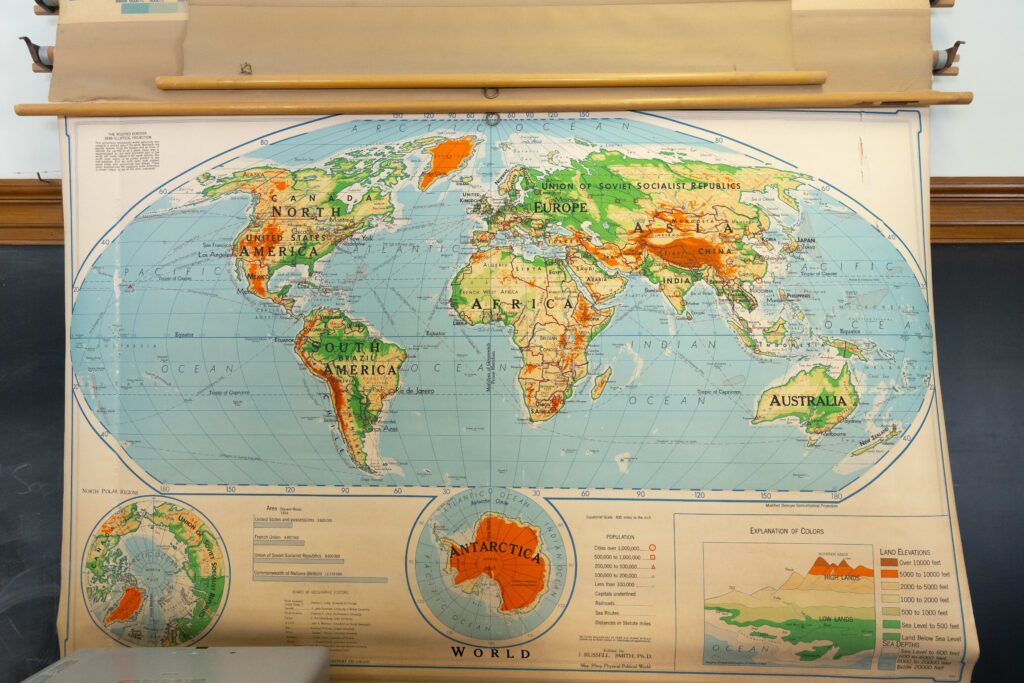
“These maps are so old; this one is from 1954. The country borders have changed, of course, but when you’re teaching history, that can be useful! They’re so fragile, I’m always worried that they’re going to rip.”
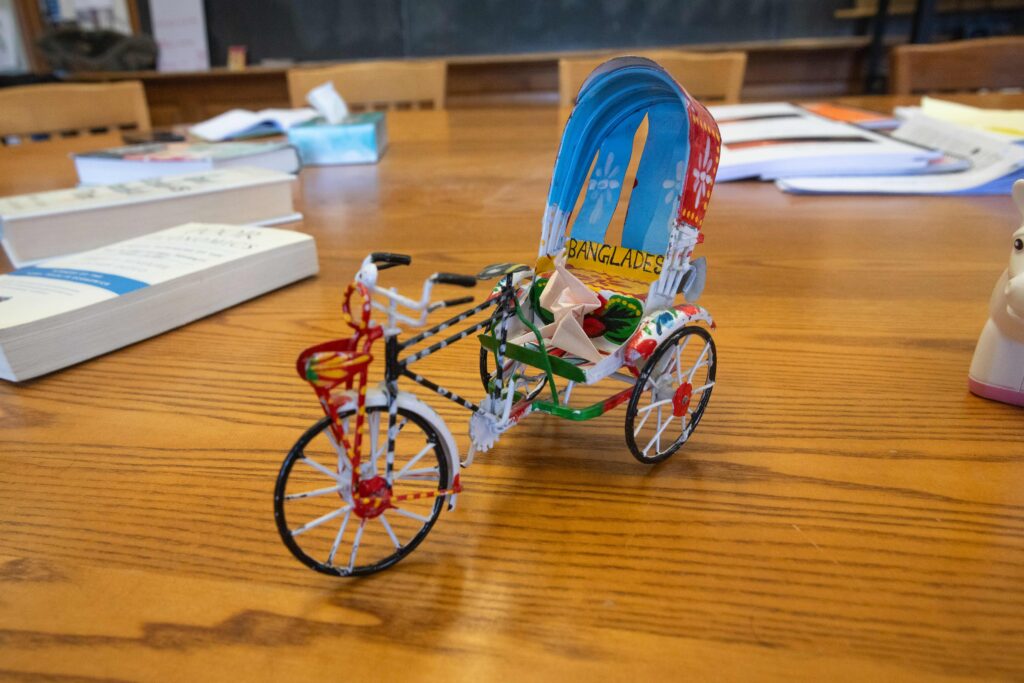
“I like to have a few little toys out that kids will sometimes play with or just hold while they’re talking or at the table. I started the course Why Are Poor Nations Poor? and a student who lived in Bangladesh came back from winter break and brought me this tiny rickshaw. She told me all about the marketplace where she bought it and the artisan who had made and sold it to her. So much of her story aligned with themes in the course.”
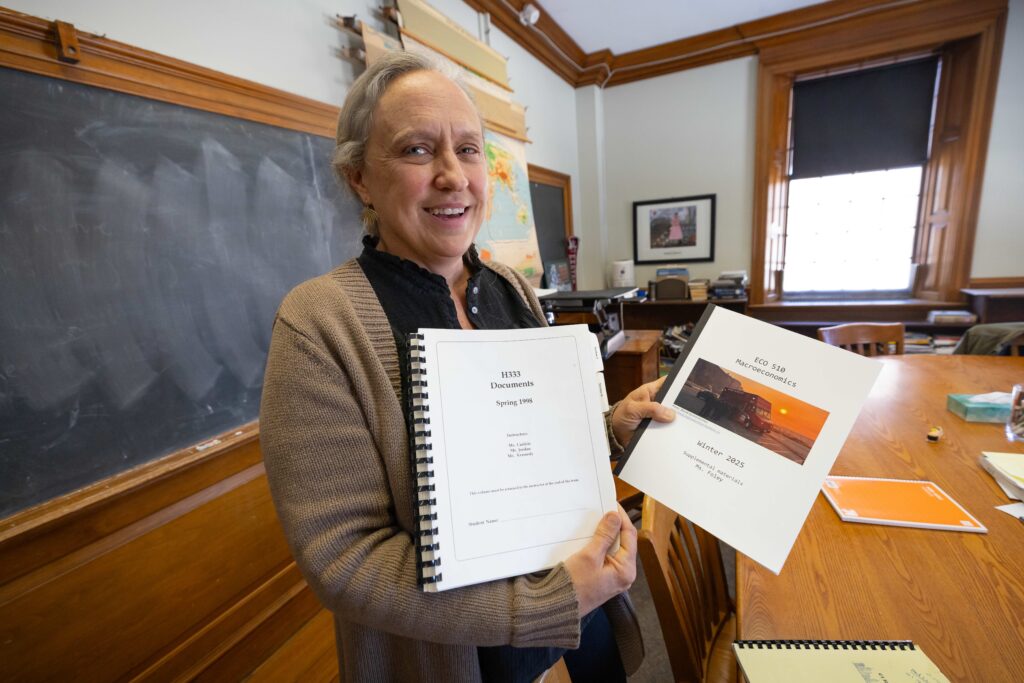
“These are document readers for two courses, one from 1998 and one from this year. With our teaching, there’s kind of a lineage to it. You start by working with somebody off of their syllabus and then you make changes and adjustments and slowly it becomes your own. Or maybe you make a radical break and it becomes your own suddenly. Then someone else starts teaching the course and you share your syllabus with them and they make their additions and you add some of their additions to your own. When you look back at these readers, you can see that lineage.”
